Redrawing History: Now in Technicolor
When I last wrote about the graphic novel at the heart of the Redrawing History: Indigenous Perspectives on Colonial America, we had just finalized the script and settled on a title. Today, Ghost River: The Fall and Rise of the Conestoga (Native Realities Press, 2019) has progressed far beyond the pencils drawings I shared with that post.
The artistic process unfolds in five interconnected stages. First, thumbnails provided a general sense of the narrative and page formats. From those thumbnails, our artist, Weshoyot Alvitre, loosely rendered each page in pencil. You might remember that those images looked something like this:
In the third stage, Weshoyot traces over those pencils in ink, using a 14 karat gold dip pen nib from 1890. This stage, which she is just now completing, is perhaps the most laborious given the size of her canvas (11 by 17 inches) and the level of detail in each page. For example, every brick in the image below had to be drawn by hand.
At present, Weshoyot has painted about one-third of the graphic novel, beginning with some of the most detailed images in the book. She expects to complete her art by the end of June, after which we enter the fifth and final stage of the artistic process: lettering.
Stay tuned for more on that in a future post, but, in the meantime, I invite you to see for yourself how these pages come to life in color.
Pages 2-3 (double-page spread)
Page 17
Pages 22-23 (double-page spread)
Redrawing History: Indigenous Perspectives on Colonial America has been supported by The Pew Center for Arts & Heritage.

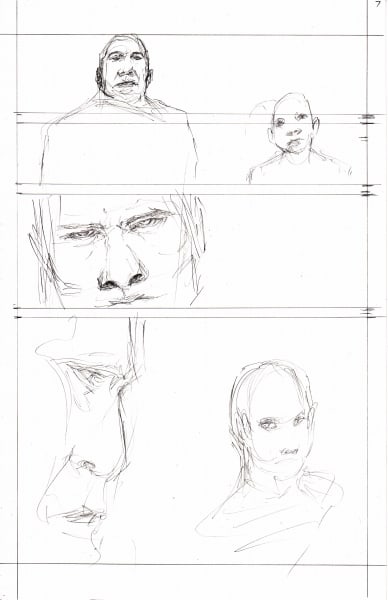
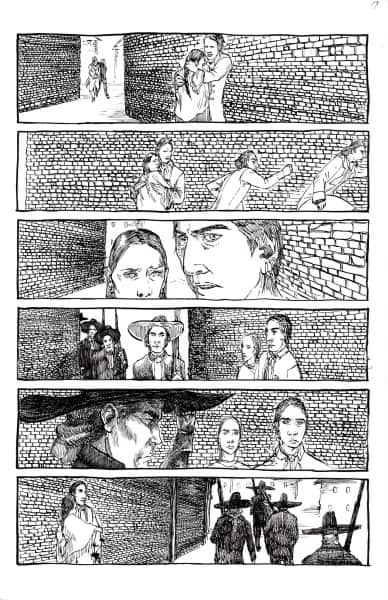
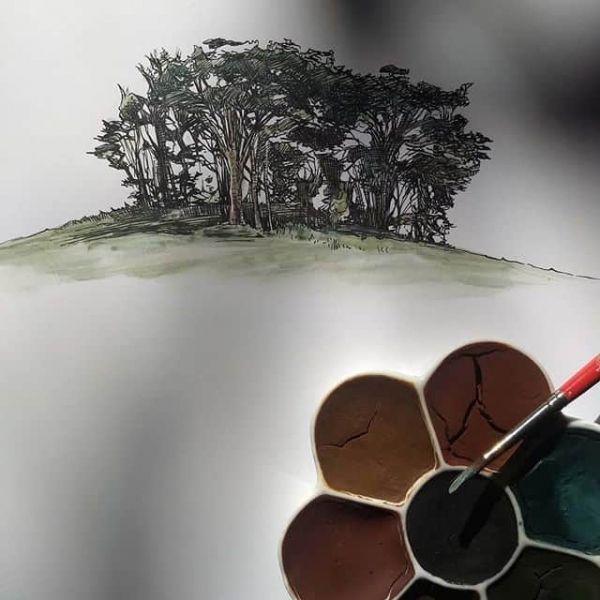

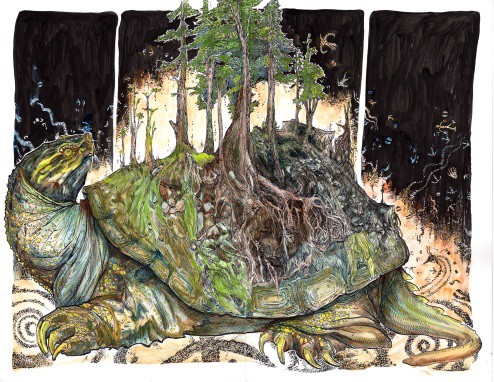
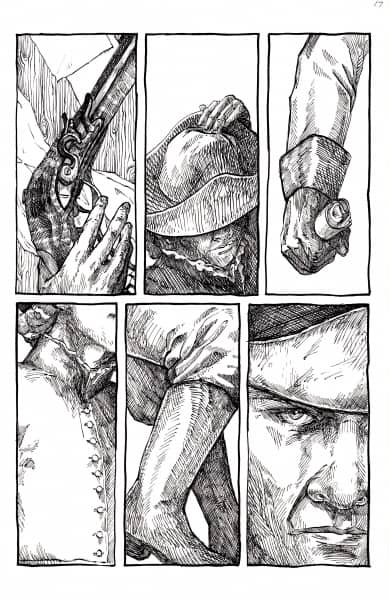
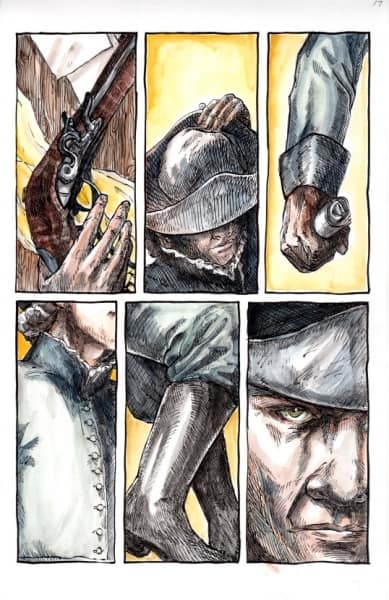
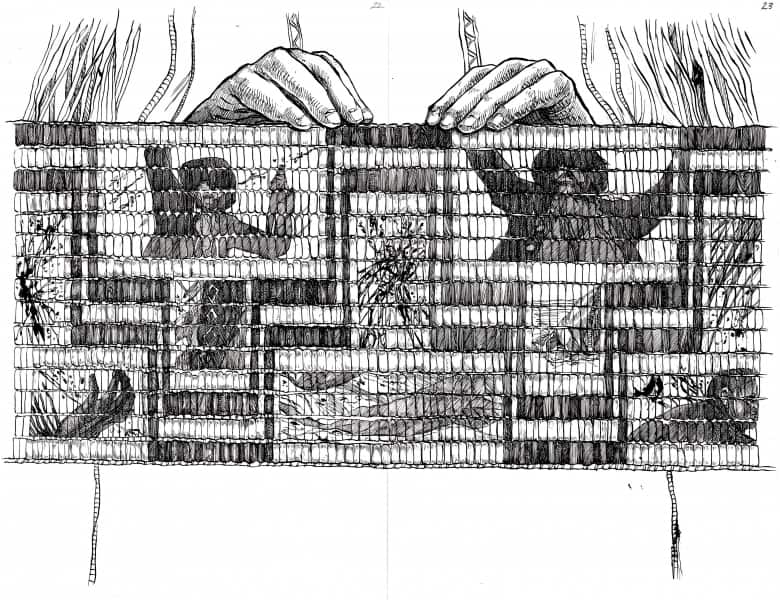
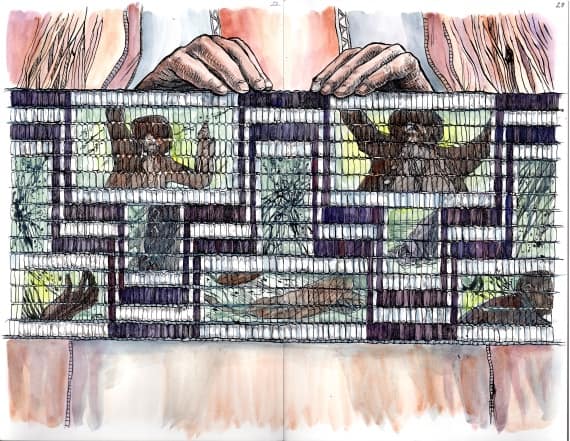


 Lauren Lipton/ KYW Newsradio
Lauren Lipton/ KYW Newsradio